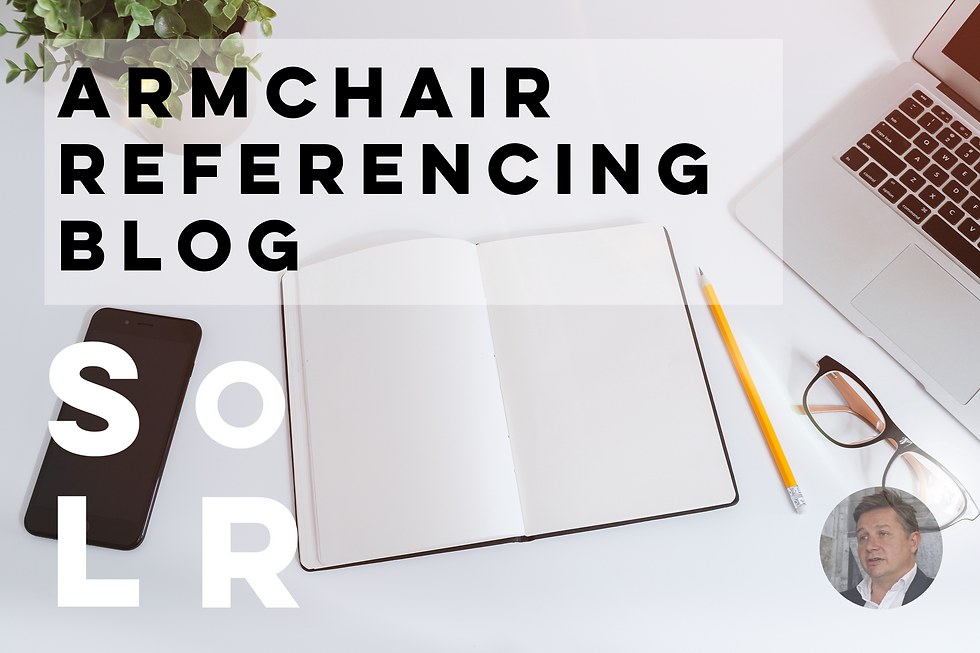Armchair land referencing #20
- Ashley Parry Jones
- Jun 30, 2023
- 4 min read
Updated: Jul 6, 2023

I always tell my clients that WSP, being a multi-disciplinary consultancy, can provide pretty much all their needs to help them with their projects, but generally we cannot provide the services of a specialist lawyer. So, whilst land referencers identify land and the legal interest held in it, we do not necessarily adjudicate or pass judgement on the accuracy of the information we are given. This is the domain of lawyers. It may be something of a shock to discover that one of the five largest economies in the world - the United Kingdom – lacks what is often seen as being a key element of an efficient land administration system, in that it has no ‘cadastre’ - the system to fix land ownership rights by reference to well delineated and measured boundaries. The concept of a cadastre is so alien that few British surveyors are even familiar with the term. Instead of a cadastral system we have a Torrens-style land register with the state, in the guise of HM Land Registry and our other national land registries, maintaining central registers of titles without precise locations of boundaries.
Boundaries disputes are famously contentious issues (often arising from other unrelated problems between neighbours) and something land referencers would do well to try and avoid getting mixed up in. The boundary of a property is usually where it is delineated on the ground and on the title (if the property is registered), however these boundary lines are seldom very precise definitions with walls, fences, and especially hedges and ditches, wobbling about and having width that can’t be shown by any line on a plan with a theoretical zero width. Besides, the exact boundaries may be set out not in titles but in deeds or conveyances, which we neither see nor may expect to have been mapped accurately given that some will be hundreds of years old and possibly never even included a plan at all. Little wonder that disputes arise. In the UK there are only a couple of rules of thumb: i) it’s very unusual for a record of exactly where a boundary is to exist; ii) physical boundaries are usually built on the land of the person who installed them (which means that the land bordered by a ditch and hedge usually has it’s boundary on the far side that ditch - the spoil from the ditch being used by the person who dug the ditch as the base for their hedge); and iii) the person who has historically maintains the boundary structure often owns it. This vagueness is captured in The General Boundary Rule with is now embodied in statute (s60 of Land Registration Act 2002). It states that Title Plans shall be deemed to indicate the general boundaries only, and that the exact lines of the boundaries are deliberately left undetermined: a very British approach - ignore the problem and hope it goes away.
Boundaries can be funny things. I used to use a pub that had a rear bar in one borough and a front bar in another, with the two local authorities having slightly different opening hours which meant that people had to move from one to the other to continue to be served. During the COVID-19 lockdown local boundaries caused confusion at Llanymynech Golf Club where players tee off in Wales for the first four holes but putt out the fourth in England where they stay until they return to Wales on the seventh tee. England and Wales had different Coronavirus rules about outdoor activities which threw the Club into confusion. The confusion was possibly worse for a couple living in Otley, Yorkshire. Their house is in Harrogate, North Yorkshire and during tier 2 lockdown, they were permitting to meet people outside in their garden. But their conservatory and garden are in Leeds, West Yorkshire which was under tier 3, where meeting outside was forbidden.
On a much larger scale the problem of drawing a line on a map, and people finding themselves on one side of it and not the other, leads to international disputes. There are dozens: Indian partition, Gaza, Korea, Rwanda all spring to mind. China alone has boundary disputes with 18 countries - despite only having 14 land borders. Africa abounds with conflicts that have resulted from someone (from Europe) drawing a straight line and imposing a boundary that ignores historic local tribal territories and I am sure we can all think of other geopolitical issues that have resulted from the drawing of lines on maps. As land referencers we need to be careful when drawing boundaries for our projects because as soon as a line is drawn, we place people on one side of it or the other. No wonder Land Registry takes a pragmatic view about exactly where one ownership finishes and another starts. Next time we’ll consider just what is ‘ownership’ and why this is important.
This article is written by Ashley Parry Jones, Director – Planning, WSP. The opinions expressed are those of the author and do not purport to reflect the opinions or views of WSP or SoLR or its members. The information provided does not and is not intended to constitute legal advice and instead is offered for general purposes only. It does not constitute the most up to date legal information. Any links and references provided are for the readers’ convenience only and do not constitute a recommendation of those sources.

Comments